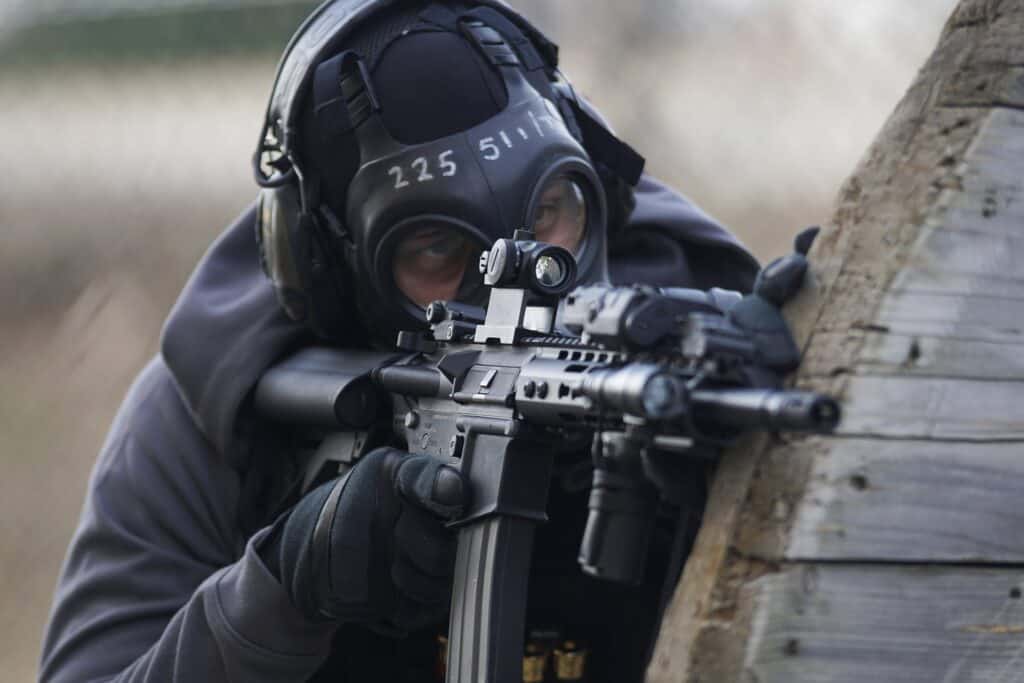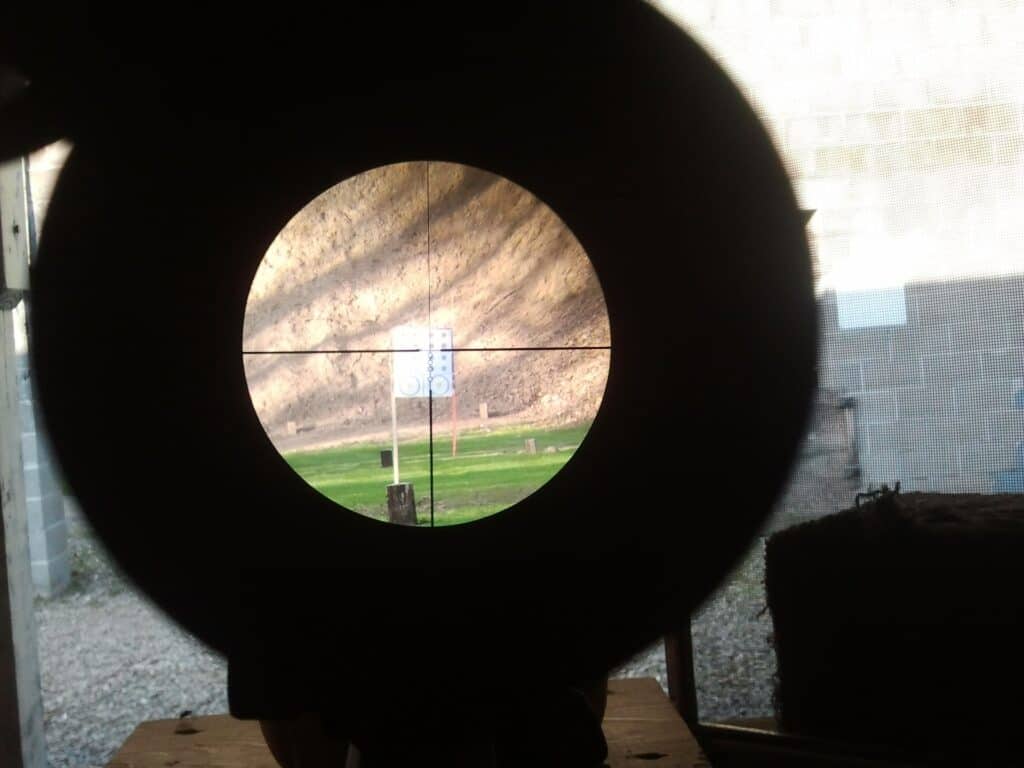As an Amazon Associate we earn from qualifying purchases.
New and long-time AR-15 owners sometimes find it difficult to sight their AR-15 red dot. This is becoming increasingly important, as red dots have grown in popularity because of its usefulness. In this article, I’ll teach you how to sight in AR-15 red dot.
Contents
How to Sight in an AR-15 Red Dot
Red dot sights help a lot of shooters. It combines the benefits you get from using iron sights and riflescopes. It assists your shooting in competitions, hunting, or combat.
If you have a red dot with an iron sight, all you have to do is what most soldiers call “lollipopping”. Lollipopping is the method of placing the dot on the top of the front post of the iron sight. This method involves:
- Aiming for the target
- Knowing the symbols in your sight
- Adjusting your sight

There are many things to take note of when you’re learning how to sight in an AR-15 red dot. Most notably is the red dot sight and directional symbols you see on your scope.
These will help you improve your speed and accuracy. However, it can be difficult at first so I will teach you how the symbols work and how to properly sight using the red dot.
Aiming for the Target
On every rifle optic, there is always a direction marked on the scope turrets. You usually see little arrows placed next to a “U” (means up) and “R” (means right) on the elevation and windage knobs.
This is where most AR-15 owners get confused. It’s an indication of where your point of impact shifts when you turn the turret in a certain direction.
This is your guide for aiming at your target. This gives you feedback on where your bullets land upon aiming at the center of a target. If your aim hits a bit high, you use the “U” as guidance and adjust your aim lower to hit your intended target.
The same goes for your left and right direction. Your bullets won’t always go to the center of your aim. There are various factors that affect the bullet’s trajectory such as wind and distance. That’s why you should treat the “U” and “R” as guides to aim properly and not just solely rely on it.
Adjusting Your Sight
Make sure you include a medium-sized flathead screwdriver inside your gun range backpack if you are heading outdoors. It does not damage your turret and you feel each turret clicks better.
You should be careful when turning clicks because the inside of a turret consists of tiny components that can get easily damaged. Make your clicks slow and smooth and stop if it feels rough.
If the turret stops turning, don’t try to force it or it might cause a problem. It might mean that there is something wrong with the way the optic is mounted on your AR-15. You may need to take a look at your turret and make some adjustments.
Adjusting After Three Clicks
Most shooters who are unsure of their click values usually count three to four clicks. You then decide if you want to adjust the elevation or windage depending on your shots. If possible, try to make your adjustments all at once.

If you make a high volume of fire, it can heat up your AR-15 barrel. The heat may cause issues with your point of impact shift. Once the AR-15 barrel cools down, the point of impact adjusts to a slightly different position.
This makes your shots highly inaccurate. Make sure to keep your eyes on this. You can also measure the difference of your shot locations and your point of aim and divide it by the distance covered by each turret click. This makes adjustments more accurate.
What Is the Best Distance to Zero Your Ar-15 Red Dot?
Getting a 50-yard red dot sight is the best option for you for different reasons. First, 50 yards is great for beginners, and aiming with it is easier for most shooters. It’s a lot different to 200 yards, where the targets are far away to practice your accuracy and precision.
50 yards is also practical for self-defense. Most domestic confrontations happen at less than 50 yards like a home invasion. There are too few scenarios that will make use of more than 50 yards of optic scope for you to practice. Even at gun ranges, most self-defense simulations happen within 50 yards.
You might have problems aiming at targets that are more than 100 yards away. This might be a problem if you want to shoot more than 100 yards at a gun range. However, you can take this as a practice for your aim and how well you can adjust your shot for shooting at long distances using only a 50-yard red dot.
What Are the Types of Red Dot Sight?
It’s also important that you know your red dot sight for your AR-15. There are 3 different red dot sights that are used for AR-15 and each of them has its own advantages.

Reflex Sights
Reflex sights are the common ones you see on many AR-15. This is probably because they are the least expensive option among the three. They use a reflection of a dot that shooters look to for aiming.
They are great for close-range shooting because they are non-magnified. You also don’t have a set distance to perfectly set your eyes to get an accurate view.
Prism Sights
Prism sights are short tube style optic. It has low levels of magnification which makes them better suited for longer range shooting than reflex sights.
Prism sights use a prism to focus the image you see down the sight. It makes them smaller compared to traditional rifle scopes. Prism sights are great for mid to long-range distance shooting.
Holographic Sights
Holographic sights are the most expensive among the three. They are similar to reflex sights but are better in quality.
Holographic sight uses a picture of a reticle placed between glass layers that allow the shooter to look through a glass window and see a holographic reticle superimposed at a distance. It has better visual quality than a reflex sight and improves your accuracy.
Conclusion
These are some of the pointers you need to take note of in order for you to properly sight in AR-15 red dot. Remember not to be too rough with your red dot and turret so you won’t do any damages. Do not solely rely on your aiming tools and also use your instinct for better accuracy.
